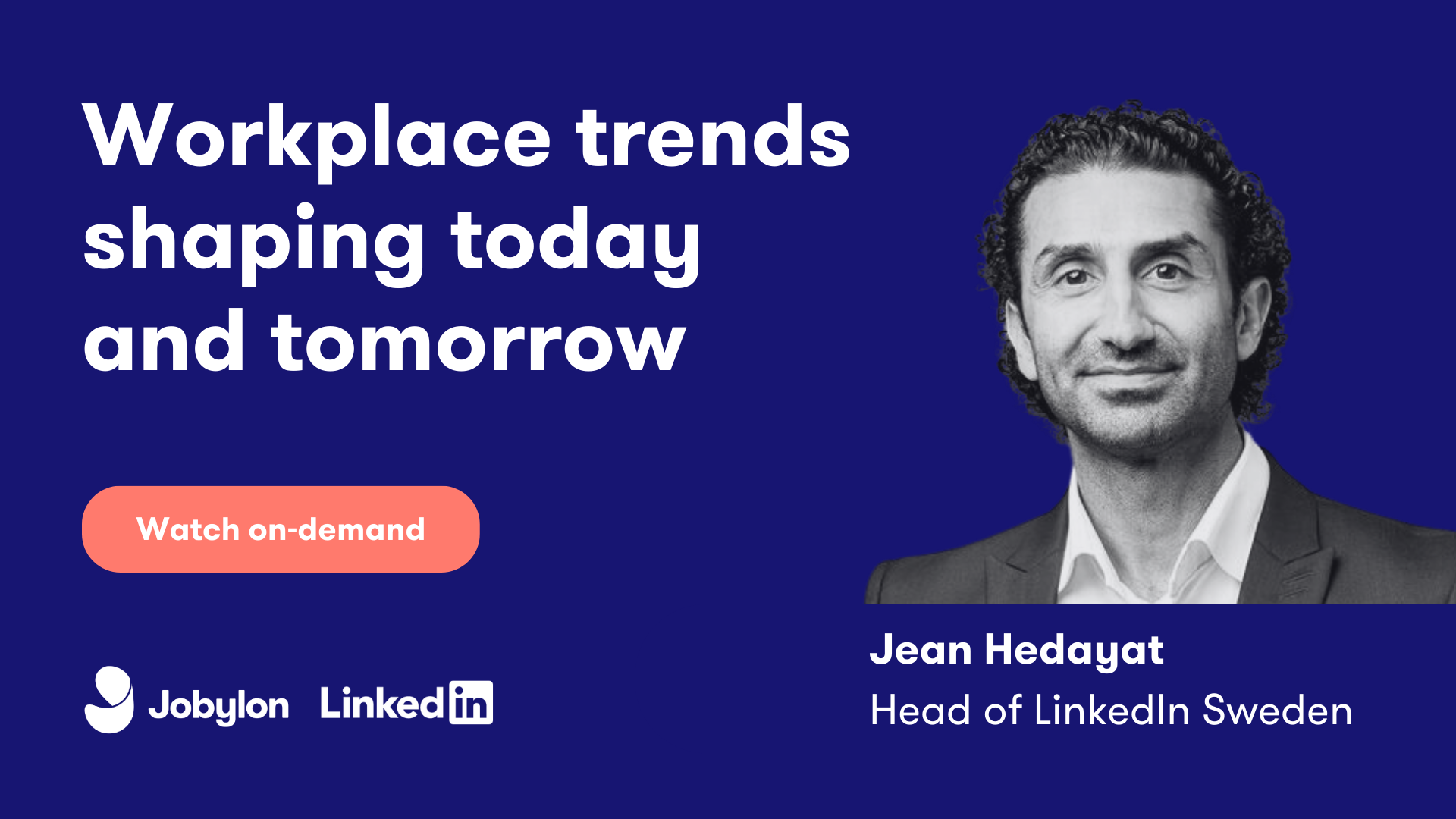The labor market has experienced significant disruption over the past few years, largely due to the impact of the COVID-19 pandemic. As we emerge from this period in time, new trends are shaping the way we work and interact in the workplace.
In this article, Jean Hedayat, Head of LinkedIn Sweden, shares three prevalent workplace trends and their implications for the present and future. Additionally, we highlight actionable insights and strategies to navigate these trends successfully.
Trend 1: Productivity Paranoia
The shift to remote work or hybrid work models during the pandemic was massive, but it has also led to a phenomenon known as "productivity paranoia". Managers, unable to physically observe their employees, are feeling concerned about the productivity levels of their employees. Are they actually working? What are they doing?
In Jean’s words:
“One of the biggest issues is that we as managers or organizations, is that we are trained into following tasks, and measure tasks instead of outcomes.”
 Employees, however, often feel more productive in a hybrid work environment. In a large LinkedIn study, about 12% of managers felt that employees were productive while working remotely. Conversely, a whopping 87% of employees felt that they were more productive while working from home. Luckily, there are a few things organizations can do to help bridge this massive gap.
Employees, however, often feel more productive in a hybrid work environment. In a large LinkedIn study, about 12% of managers felt that employees were productive while working remotely. Conversely, a whopping 87% of employees felt that they were more productive while working from home. Luckily, there are a few things organizations can do to help bridge this massive gap.
What you can do:
- Focus on outcome-based performance metrics rather than task-oriented metrics or monitoring. The hours of work don’t matter; the outcome does.
- Invest in technology that can help facilitate communication and collaboration among remote and hybrid teams.
- Cultivate a culture of trust by empowering managers to provide clear expectations and regular feedback to their employees. Train your managers in how to actually work with a remote team, including feedback and expectation management.
- Encourage open dialogue and discussions to address concerns and build stronger relationships within the organization.
Trend 2: People-centric culture
With larger parts of Generation Z in the workforce, organizations must adapt to create a people-centric culture if they want to hire and retain top talent. Generation Z employees value alignment, transparency, and a focus on social and environmental issues. To attract and retain talent from this group, companies need to foster a culture that aligns with these values. Soft skills, such as effective communication, empathy, and diversity and inclusion, play a crucial role in building such a culture.
As Jean puts it:
“According to some reports, by 2030, about 30% of the working population is going to be Generation Z. We're gonna be at a stage where we have a lot of generations working together, and we need to actually create a fundamental of how to work together”.
What you can do:
- Define and articulate the organization's core values and integrate them into the company culture. Make sure to keep the generational differences in mind when exploring values and behaviors tied to these.
- Foster a diverse and inclusive work environment that values different perspectives and experiences.
- Provide opportunities for learning and development, with an emphasis on both technical and soft skills, as well as diversity and inclusion training.
- Incorporate social and environmental initiatives into the company's mission and activities to engage employees.
Trend 3: Upskilling and reskilling
The third and last trend is to actually invest in your employees and their skillset, especially considering the available talent market is diminishingly small for some skills. Furthermore there is the aspect of the world changing so rapidly.
About 50% of job skills are expected to change by 2027, and the half-life of technical skills is currently around 2.5 years (LinkedIn, 2023). Not only is it crucial to upskill to have a chance at driving a successful business over time, but retention-wise, three of the five top reasons why people stay at a job are tied to skills development in some way (LinkedIn, 2023).
In Jean’s words:
“Surprisingly, the unemployment rate is quite low across the markets, but the need for talent is very high. So we actually have another paradox in terms of like, people are not moving around, but we need to hire people. So what does that mean? What it means is that we need to think about how to upskill and reskill”.
Identifying the critical skill sets required for present and future roles becomes essential to stay ahead, but if you only look for these skills outside of your organization, you’re missing out on a lot of talent and opportunities.
What you can do:
- Try to shift from experience-based recruitment to skill-based recruitment to widen the talent pool, and keep potential in mind as a more important factor than current skills if you are planning on training and upskilling new employees regardless.
- Embrace data literacy as a core skill set within talent acquisition and HR teams. This allows them to make data-driven decisions with less bias, leading to more successful recruitment outcomes.
- Establish a robust internal mobility program that enables employees to grow and develop new skills within the organization.
- Foster a learning culture by providing accessible and relevant learning opportunities to employees.
Summary
As workplaces continue to evolve, adapting to ever-changing dynamics becomes crucial for organizations to thrive. Addressing productivity concerns through trust-building, creating people-centric cultures, and investing in upskilling and reskilling initiatives are actionable steps toward success. By acting on these points, organizations can navigate the shifting landscape, attract top talent, and foster a culture of growth and innovation.
Want to watch Jean speak about this topic instead? Check out this short keynote speech he recently held!






